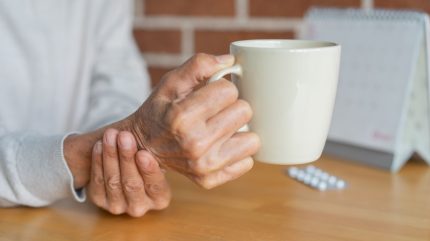
A Phase I/II trial by Japan’s Kyoto University Hospital and the Center for iPS Cell Research and Application (CiRA) researcher and clinician team has demonstrated encouraging outcomes with the use of allogeneic induced pluripotent stem cells (iPS cells)-based dopaminergic progenitor cells for treating Parkinson’s Disease (PD).
The team is spearheaded by professors Jun Takahashi from the university’s Department of Clinical Application and Ryosuke Takahashi from the Graduate School of Medicine.
PD is caused by the loss of neurons that produce dopamine, and while traditional treatments provide temporary relief, they often lead to complications such as dyskinesia.
The university noted that iPS cell technology, provides a scalable solution with the potential for a stable dopaminergic progenitor supply.
In this open-label trial, seven PD subjects aged between 50 and 69 were involved. The first one underwent a unilateral transplant for an eight-month safety assessment, followed by a bilateral treatment after confirming tolerability.
The other six subjects received simultaneous bilateral transplants, with the high-dose group exhibiting a significant increase in the production of dopamine.

US Tariffs are shifting - will you react or anticipate?
Don’t let policy changes catch you off guard. Stay proactive with real-time data and expert analysis.
By GlobalDataThe transplantation process utilised neurosurgical navigation for precision and was accompanied by immunosuppressive therapy with tacrolimus, which was discontinued at 15 months.
According to the university, throughout the two-year monitoring period, there were no reports of severe adverse reactions. A total of 73 mild to moderate incidents were recorded, ranging from itching at the injection site to a single moderate instance of transient dyskinesia.
Magnetic resonance imaging (MRI) examinations showed a steady rise in the volume of the graft, indicative of the transplanted cells’ normal distribution and spread, without signs of malignant growth.
Concurrently, positron emission tomography (PET) scans exhibited a 44.7% increase in the uptake of putaminal 18F-DOPA.
The clinical efficacy observed was also noteworthy. Four out of six subjects reported a 20% improvement in motor scores off medication, and on medication, there was an average improvement of 4.3 points, suggesting that the grafted cells had integrated into the brain’s circuitry and were functioning as a new source of dopamine.
The success of this trial builds upon over ten years of collaborative research and paves the way for future multi-centre trials led by physicians.
Additionally, a related study initiated at the University of California, San Diego in late 2023 is set to further propel the progress toward regenerative therapies for PD and other neurodegenerative conditions.



